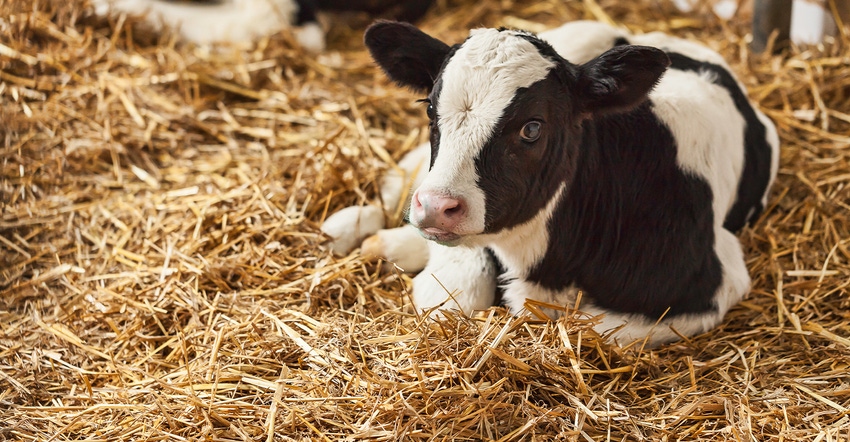October 23, 2019

By Ashley Olson
As I write this article, I am hearing that this winter, we will experience a “polar vortex” that will bring extreme cold to the Midwest. I hope this prediction is not accurate, but either way, it is good practice to do what one can to keep dairy calves warm, dry and healthy all winter long.
Calves less than 3 weeks old are more likely to experience cold stress at temperatures below 59 degrees F. For example, the lower critical temperature for calves from birth to 7 days of age is 55 degrees. For older calves, the lower critical temperature is 32 degrees. A normal body temperature for a calf is around 101.5 degrees, though that can vary a degree or two depending on the time of day.
To maintain this body temperature in the cold weather, a calf must consume more energy, and the environment must be managed to minimize the increase in their maintenance requirements. Ideally, both strategies will be implemented, but this article focuses on managing the environment — in particular, the use of bedding.
Bedding
One of the best practices to follow is using proper bedding, as this should provide adequate thermal insulation. According to Sarah Morrison, a research scientist at the William H. Miner Agricultural Research Institute, body heat from a calf is retained in air pockets of straw bedding, which helps to reduce heat loss to the environment when the calf is lying down. Straw bedding should be dry and added frequently. Other types of bedding can be used in warmer months, but straw is best for winter.
How do you know if a calf has adequate bedding? The University of Wisconsin-Madison developed a nesting score system involving three scores (Lago et al., 2006) to evaluate how much of the calf is covered by bedding when lying down.
A nesting score of 1 means no bedding covers any part of the foot or leg. This is OK in the summer, but not in the winter. A nesting score of 2 means part of the leg is visible while the other part is covered by bedding. Most of the time the lower part of the leg is covered. A nesting score of 3 means a calf can nestle in the bedding and cover all the way up the legs, so the entire leg is covered. This is what you want for your calves in the winter. Straw bedding or long-stemmed hay is the only way to accomplish this score.
Calf jackets
In addition to using the nesting score with bedding, calf jackets are easy to implement and help manage the cold. A nesting score of 2 with the calf wearing a jacket can be adequate for winter months. With calf jackets, however, make sure to adjust straps as the calf grows, and keep jackets as clean and dry as possible.
These are just a couple of best practices to keep in mind for keeping calves warm as winter seemingly lasts too long. For more information about the dairy industry, visit the UW-Madison Division of Extension Dairy Resources website, or contact your local Extension office.
Olson is the Extension agriculture educator in Vernon County, Wis. This column is provided by the University of Wisconsin-Extension Dairy Team.
You May Also Like




